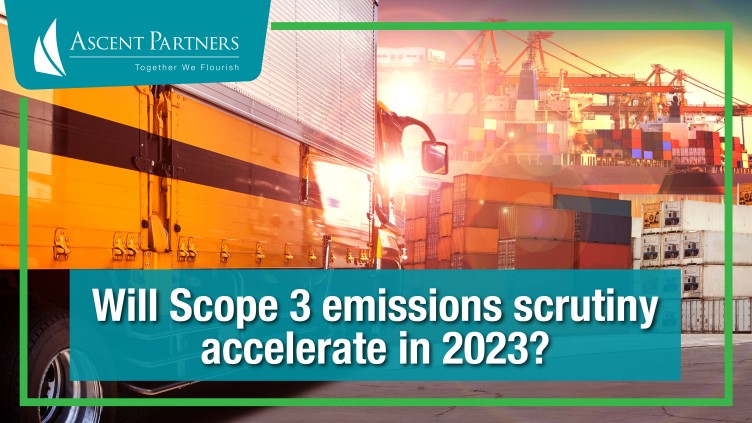
Will Scope 3 emissions scrutiny accelerate in 2023?
The challenge to reduce Scope 3 emissions (indirect emissions by suppliers or consumers in an organisation’s value chain) will accelerate in 2023 as companies focus on their supply-chain partners and on how their products and services are used by customers.
This is the prediction of the World Economic Forum early in 2023 following the conclusion of the COP 27 meeting in November 2022. And it cites the need to reduce Scope 3 emissions as the real test to reaching the global 1.5 degree C target by 2030.
According to the United Nations, the world’s greenhouse gas (GHG) emissions are still set to be 10% higher in 2030 compared to 2010. Consequently, it becomes imperative that businesses look beyond their emissions and focus on the complete range of their value chains instead.
Scope 3 typically accounts for the vast majority of emissions, so reducing those that companies have direct control over (Scope 1 and 2) can only go so far in reaching net zero. According to the World Economic Forum’s analysis Scope 3 emissions usually account for more than 70% of a business’s carbon footprint but aren’t generally reported on ESG (environmental, social and governance) reports.
Hence, shifting focus to this class is crucial in reaching climate targets.
And some of the world’s largest investors are likely to target Scope 3 in 2023, the World Economic Forum estimates.
The world’s largest Sovereign Wealth Fund, Norway’s Norges Bank Investment Management (NBIM), emphasised its efforts in investing in companies with net-zero targets.
“In our portfolio of more than 9,000 companies, as much as 70% of emissions come from only 174 companies. This reveals the weighty responsibility large companies have”, said Nicolai Tangen, the CEO of Norway’s US$1,3 trillion fund.
So, whilst reducing Scopes 1 and 2 (direct emissions) have been the primary focus of many companies in the last decade, investors, and increasingly consumers, are turning their attention to Scope 3 emissions as they have largely gone unregulated and often under-reported until now.
It is therefore time to look at the whole picture, not rely on upstream practices, but increasing awareness and reporting of downstream activities – investors, consumers and regulators are all putting Scope 3 under the microscope in 2023!
